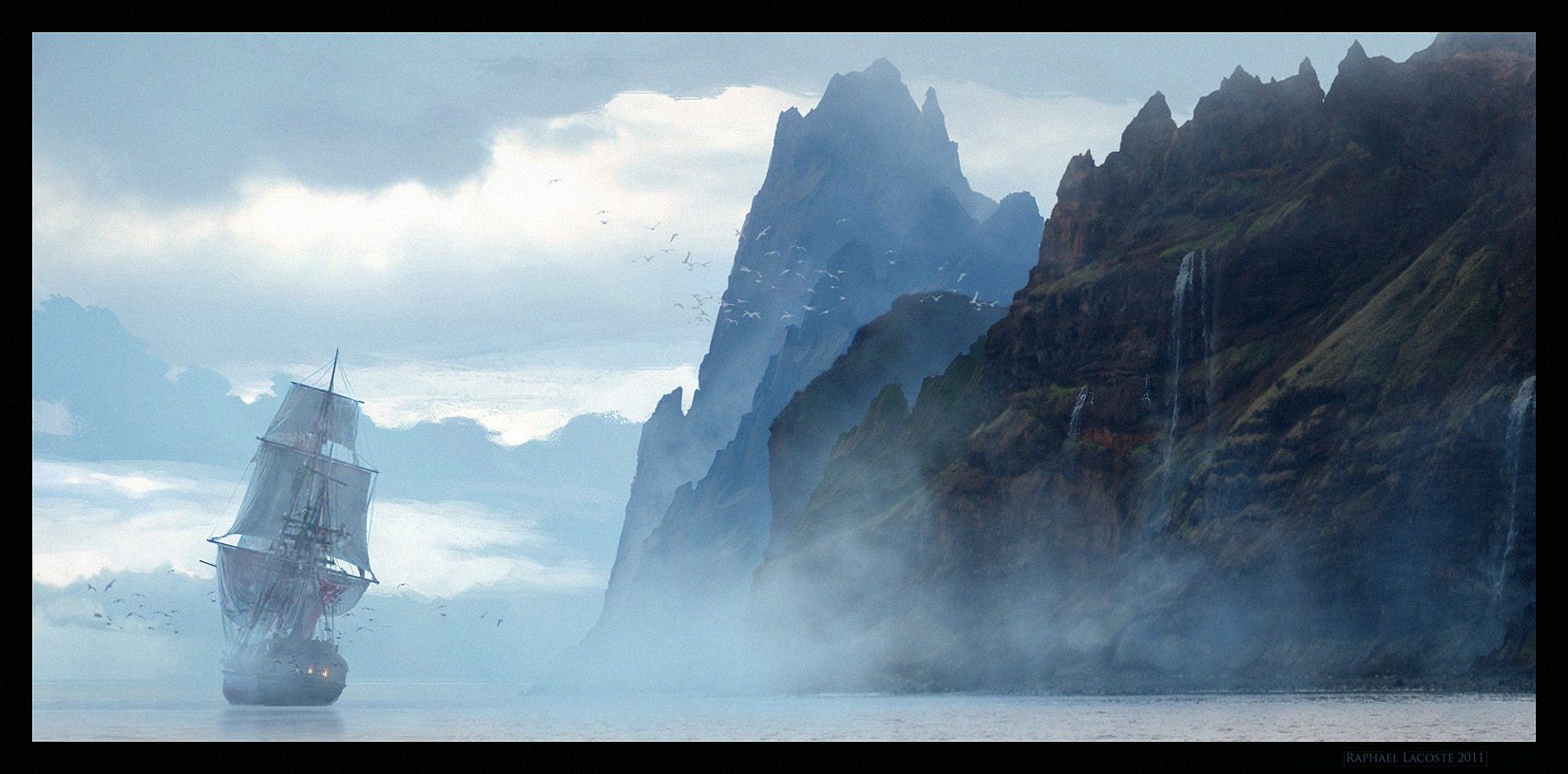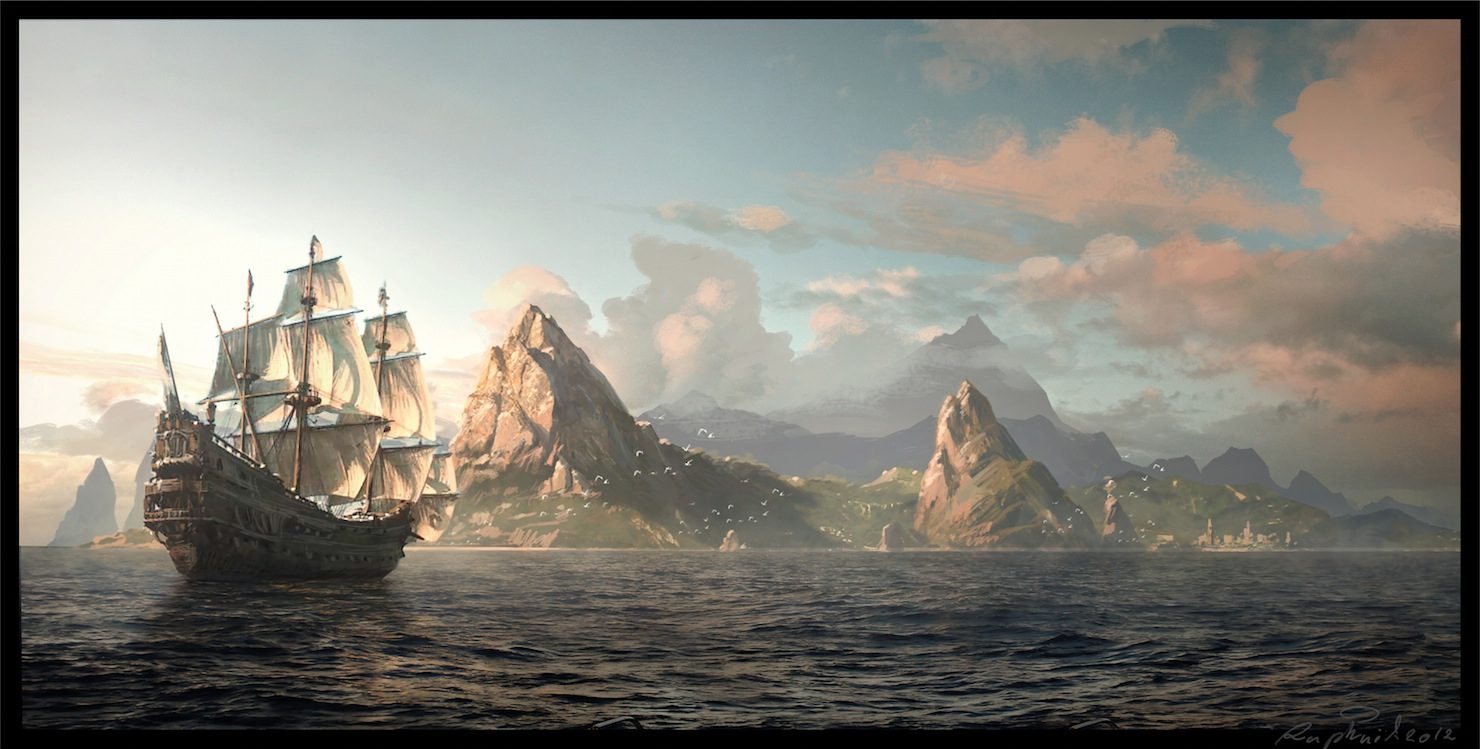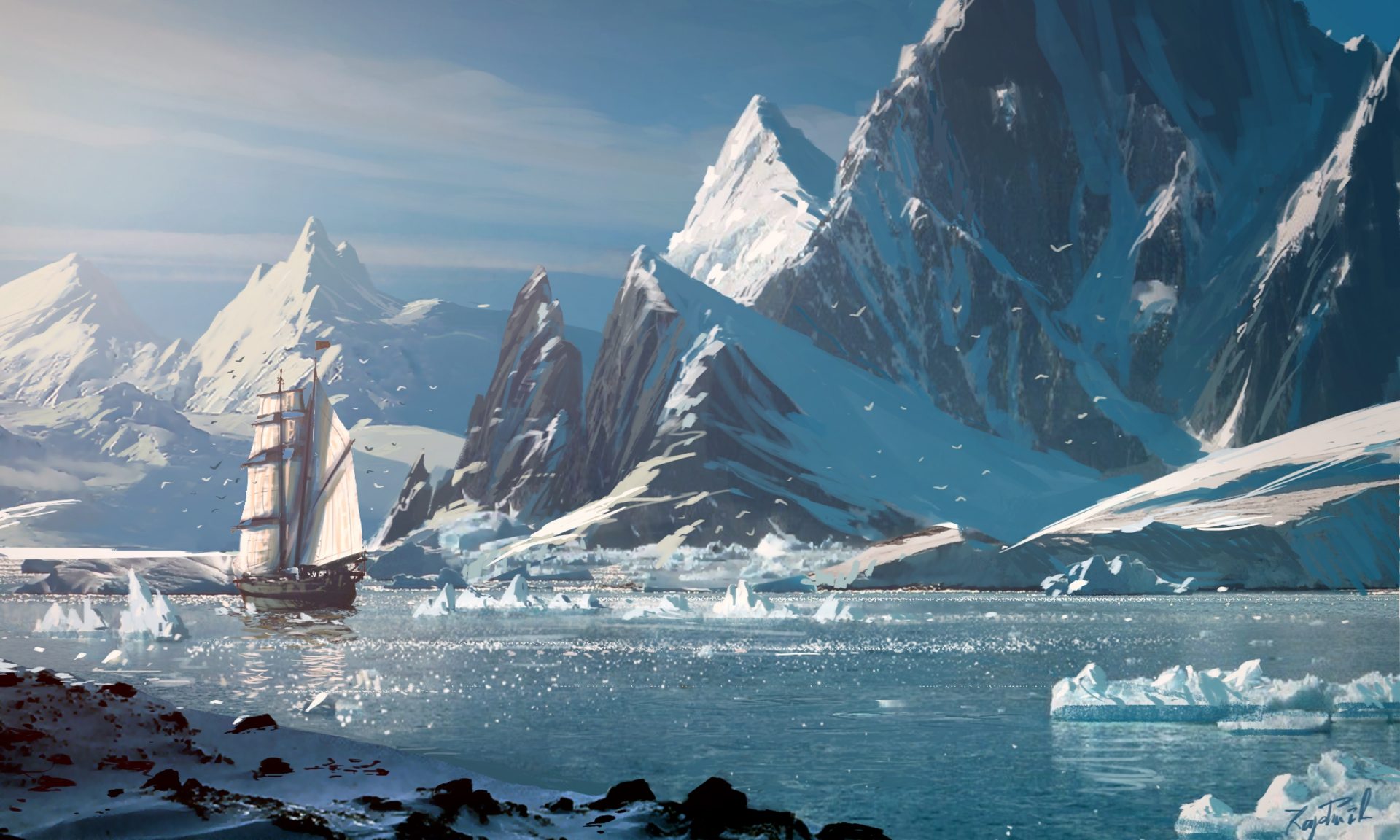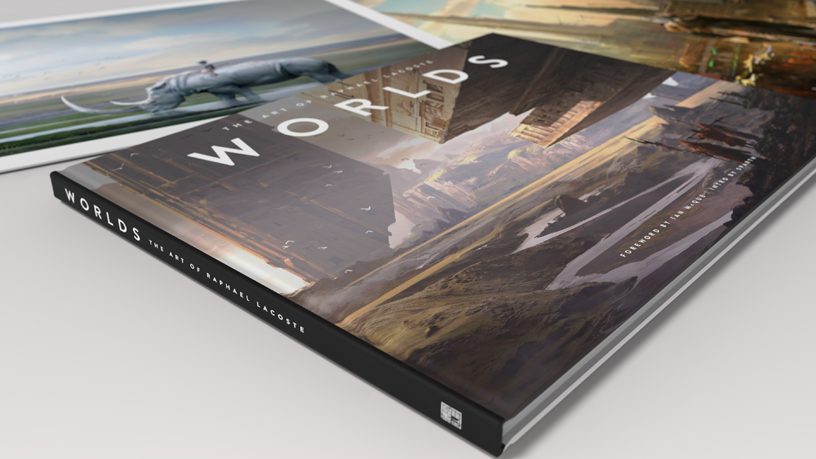To celebrate Worlds, the already funded limited edition art book by Raphael Lacoste, Assassin’s Creed Franchise Art Director, we’ve the pleasure to republish one of our past interviews
https://vimeo.com/165267224
IA : How could you describe the changes since the first time you’ve worked on Assassin’s Creed? How have you influenced the way the character has evolved ? His universe ?
RL : The Challenge on the artistic side has a similar pillar, creating a fully interactive, immersive and beautiful world and a charismatic, appealing and badass hero :-). Since the first AC, interactivity evolved a lot and now we even have the opportunity to use organic environments for navigation. This is even more challenging but offers tons of new opportunities for exploration and immersion. The New Character is a Pirate before being an assassin, this is showing on his design and attitude, he will eventually turn into an assassin and learn how to embrace a greater cause later in the game, his attitude is quite selfish at the beginning!
IA – Black Flag, send us in a Pirate world with tons of new environments. Can you explain the creative process regarding these parts from the research phase to the final work?
RL – In ACIV black flag, we have more than 50 unique locations, Sea, Cities, Jungles, Mangroves, Mayan ruins, caves, underwater… this is a huge evolution in the Franchise! A Part of the team went to Havana, Cuba , Costa rica and Santo Domingo to study Architecture and Nature, we wanted to create a plausible world, documented but also stylized. Immersion is important when you have to recreate real location like a famous city : how can you recreate Havana without having visited this great city ?
When we had tons of references, our concept team started to work on Compositions and Mood , we wanted to push diversity as much as possible, for instance various silhouettes were created for the shapes of the Islands, Coves, Jungles so we could have natural landmarks in the open world of ACIV. Each Location have a specific flavor and we made sure to stylize every place with our illustrators to have a unique treatment for each cities and uncharted Islands of the Game.

IA – You often speak about the importance of shapes and scales. Have experiment some new things for this episode in terms of concept art?
RL – Indeed, Composition, Scale is an important topic in My art Direction and also for the Game, Verticality is something Fans love about exploration and Landmarks, we really tried to bring back this notion in ACIV.
I always try also to exaggerate the proportions of Architecture and Compositions to have epic and memorable Places in the cities but also in the Landscapes. We did a couple of studies, inspired by the real Caribbean world but pushed the style to a next level to add more vertical exploration and epicness.

IA- You’ve also a huge experience in terms of photography. How do you think it’s influenced your work for games such as Assassin’s Creed?
RL — For Sure, my past as Photographer and huge hobbyist has an impact on my work… Many of my photos were used as reference for the Game and benchmarks, materials for the illustrators. I think also I have thanks to my experience in Photography a certain eye for light, mood and composition, which is very important when you want to create plausible and immersive environments. What I like with photography is to catch moods and moments, in a game, we enjoy Creating those moments and virtually be immersed into them.
IA – I guess that an open universe is something really hard to develop for an artist, as by definition it’s open and a concept only depicts one point of view. How have you deal with this problem?
RL- Indeed, AC is not a Linear Game Genre, so we always work on more high level concepts to give inspiration to Level designers and Artists. We create an open world to explore but we still have Moments and specific locations that will create surprises, Contrasts in exploration. The idea is not to focus on too specific stuff but be more high level and think more in terms of “generic Assets” for the production.
But I personally love the freedom we have as player and the feeling of exploration we get from the open world. Our concepts are still showing through the overall high level Style of the Game, we focused a lot on diversity to offer a maximum of moods and a rich exploration.
IA – The cities seems to also be an important part of the creative environment in Assassin’s creed IV, but also the light during the whole journey. How have you worked on all the different mood, the light through a typical day when creating the concept?
On the Ocean, the main thing we see is the Sky and the Sea, this is where we had to push art to a next level after ACIII.
I wanted to have a very Painterly look for the Time of day, We didn’t want something too realistic and Physically based. We did a couple of concepts for each key moments of the day including the magic hour based on historical paintings but also our own illustrations. Our Lighting Artists worked with our very hand crafted tools and the complex color tracks system to build the time of Day. They used the painter like moods we had drawn in conception, from the color of the fog, to the gradients in the sky. I am very proud of what we achieved on ACIV.
IA – Assassin’s creed will also be available in next-generation consoles. Have you worked with this in mind when creating the game? Does it’s influenced the details of the concept?
Artistic Direction was exactly the same for all the consoles (PS3 and PS4 for instance), we didn’t have specific concepts Arts for next Gen. Regarding production of the Assets, we off course had more power and more freedom to add details in the distance, HD textures, high resolution 3D models for the sails of the boat, atmospheric and lens flare effects, reflection etc… But the High level Art Direction was benchmarked on PC DX11 and current Generation consoles too.

IA – When we speak about artistic choices, we often forget the technical barriers and the reality of the hardware limitations. How do you deal with this paradox, the freedom of creativity versus the technical limitation ?
RL – Art Needs Constraints 😉 this is where the challenge is forcing us to be creative…
IA – The graphic in a game is an important part of the success, but it’s sometimes nothing if the story is weak. How do you manage to work on these two important sides of the game?
RL – If Story and Gameplay are not a success, Art can’t save the experience, we have seen that sometime happening in Films or Games…But its the same if the Game is fun but not beautiful, a AAA Game has to be AAA everywhere.

IA – Do you think that the evolution of technology has changed your way to create? in what ways?
RL- Mmh, tricky question, regarding production, ingame Assets, Yes for sure, but not for Art direction and concept Art. The evolution of technology allows us to have a stronger immersion, more complexity in the atmosphere and design of the environments, but I think that our high level intensions are not changing on a pure artistic point of view because of the technology. I love the Game ” Journey”, I am not sure it would look better on a PS4… GTAV, Uncharted and The Last of us are good examples of beautiful AAA running on current gen consoles…
Regarding tools, I personally still use Photoshop CS3 at job, I think I am kind of old school!
IA- A lot of young people would like to work in the game industry as artist, what would be your advice ?
RL – Focus on what you do the best, show only the very best of your stuff in portfolios review!
IA – What’s in your opinion, something that people should not take care of when they send portfolio for a job?
RL – People often try to show too much, we are more interested in what people do the best, not all their explorations, even if it can be interesting to see the path of an artist, but this is not useful to get a specific job 😉 I would say, (this is Particularly regarding 3D Production), that if an artist is way better in 3D character design, he should focus more on this field for instance, same for 3D Environment design, lighting, shading …
Regarding Illustrators, I love to see more explorations and high level concept arts, Often the rough version of a drawing is stronger than the rendered version… Often junior illustrators tend to be too descriptive and they lose the first strong intension of their concept Arts.
IA – Let’s end with a classical question, What’s your definition of Art ?
RL – Something nice and enjoyable to escape temporary from reality 😉
Support Worlds

[project_page_widget product=”112″]









